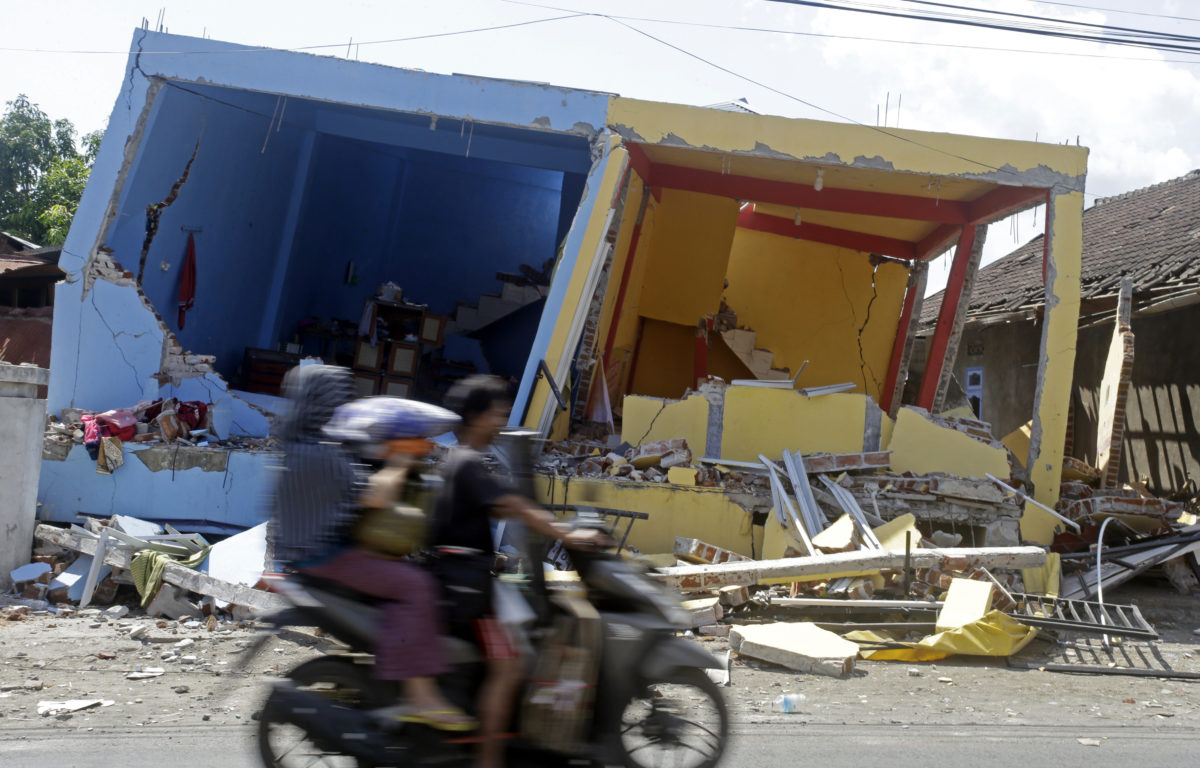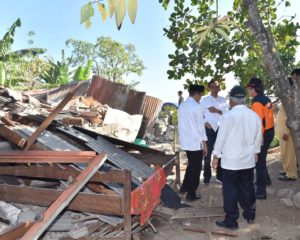Indonesian earthquake destroys towns, displacing hundreds of thousands

At approximately 6:46 pm local time on Sunday, August 5, a 6.9 magnitude earthquake struck Indonesia, primarily concentrated in the resort islands of Lombok and Bali. The earthquake measured 19 miles deep and the epicenter occurred near the city of Loloan on the north side of Lombok, but was also felt to the west, on Bali.
By Thursday, August 9, there were over 350 total aftershocks of lesser intensity, according to the National Board of Disaster Management, including one as powerful as a 5.9 on the Richter Scale. Initial death counts performed three days after the quake totaled 347 people killed, all Indonesian nationals, over 1,400 more injured, and over 160,000 displaced. By August 13 that number had risen to 436 people, according to figures released by the national disaster agency.
The official numbers are still uncertain as rescue and recovery options are still underway and is expected to take time, since the crumbling infrastructure makes delivery of aid difficult. This disaster comes less than a week after an earthquake of 6.4 magnitude hit the same region of Lombok on July 29, killing 16 and injuring over 160 others.

Now, rescue teams and medical support continue to search through debris for survivors and victims. According to Sutopo Purwo Nugroho, the head of Indonesia’s disaster management department, the majority of those killed in the disaster were struck by falling debris or collapsing buildings, though some were victims of stress-induced shock, leading to stroke or cardiac arrest. Internal agencies are reporting that as much as 80% of buildings in northern Lombok are completely destroyed, leaving as many as 160,000 entirely homeless and in need of assistance. Though the true number of persons affected is still unknown, the center of the quake was in a less developed residential area on the north side, while most of Lombok’s resorts and tourist sites are along the southern coast.
Recovery efforts are being hampered by piles of debris and the threat of aftershocks, factors that prevent help from reaching the devastated towns quickly. Indonesian President, Joko Widodo assigned the Ministry for Political, Legal and Security Affairs to oversee all rescue, recovery and aid efforts on Lombok. The response from the government has been swift to acknowledge hurdles toward recovery and begin to rebuild the lives destroyed in this catastrophic event. The head of the West Nusa Tenggara Disaster Management Agency confirmed that much of Lombok is without power, and landline and cellphone services are also down in certain areas. The Indonesian Army, however, sent three C-130 cargo planes to bring food, medical supplies, tents, and communication equipment to the thousands displaced by the quake.
Despite these efforts, the hundreds of thousands whose homes were destroyed are sleeping in crowded shelters or on the streets. Government officials say that families of those killed in the disaster will receive 15 million rupiah (US $1,036) in compensation, though most surviving victims have reported difficulty accessing even clean drinking water and have taken to the streets to collect donations. Tent camps have begun to pop up next to destroyed villages, providing a temporary source of shelter, organization and community.
Local organizations are receiving support through the Indonesia Earthquake Relief Fund and the Earthquake Relief for Lombok.
Sources and Additional Reading
https://www.nytimes.com/2018/08/06/world/asia/indonesia-earthquake-lombok.html
https://www.cnn.com/2018/08/06/asia/lombok-earthquake-intl/index.html
https://www.cnn.com/2018/08/08/asia/indonesia-earthquake-intl/index.html
https://www.wsj.com/articles/powerful-aftershock-shakes-survivors-of-indonesia-quake-1533803284
